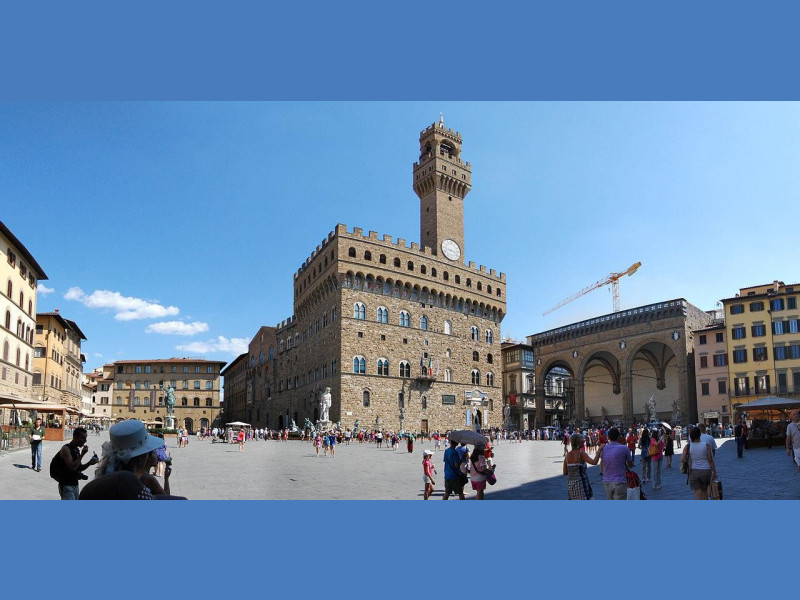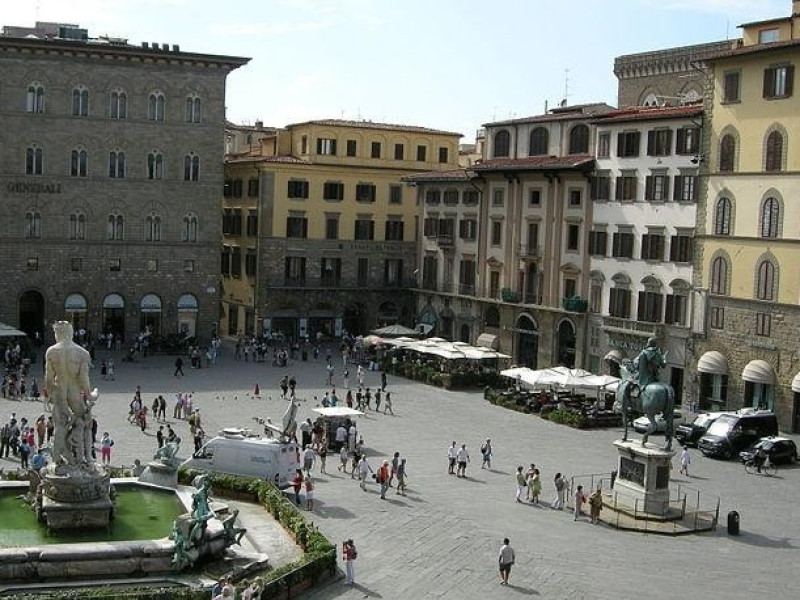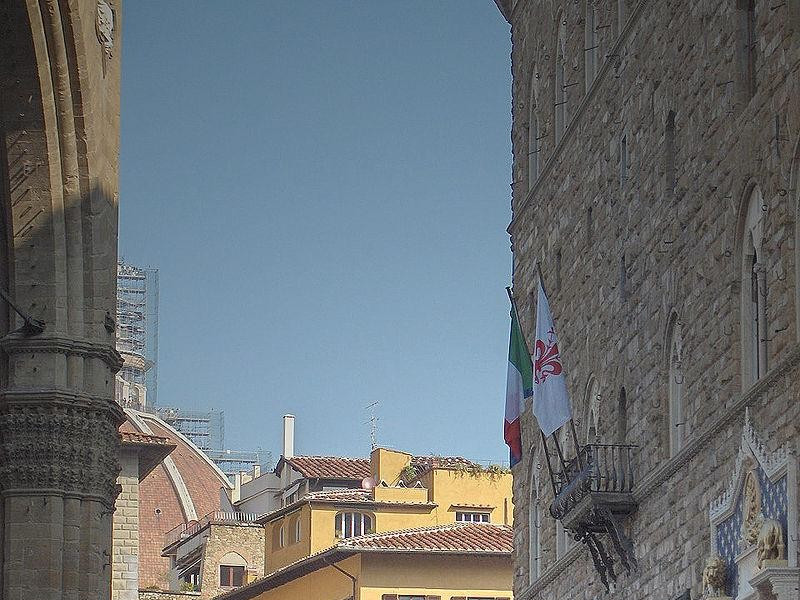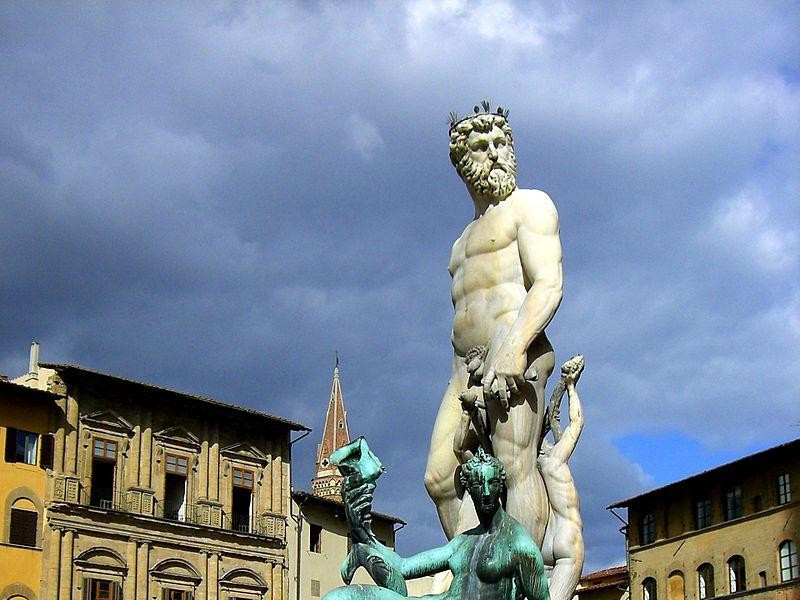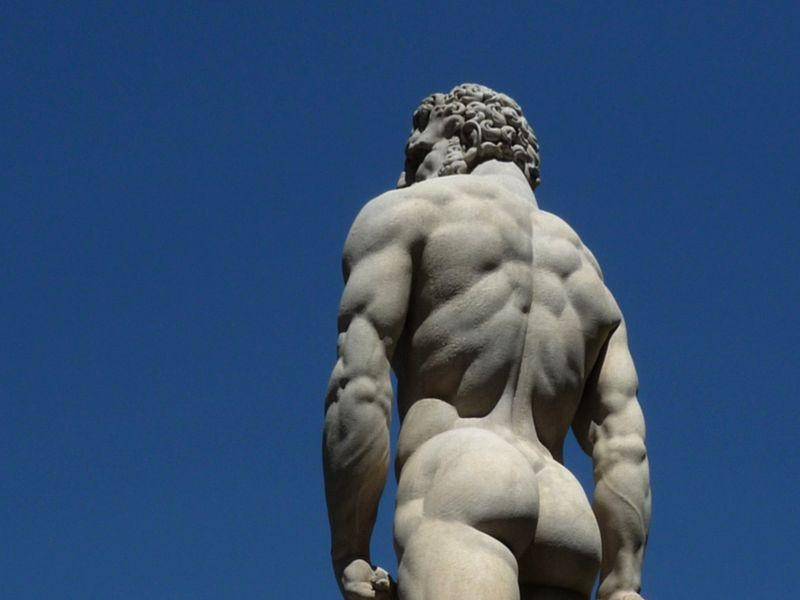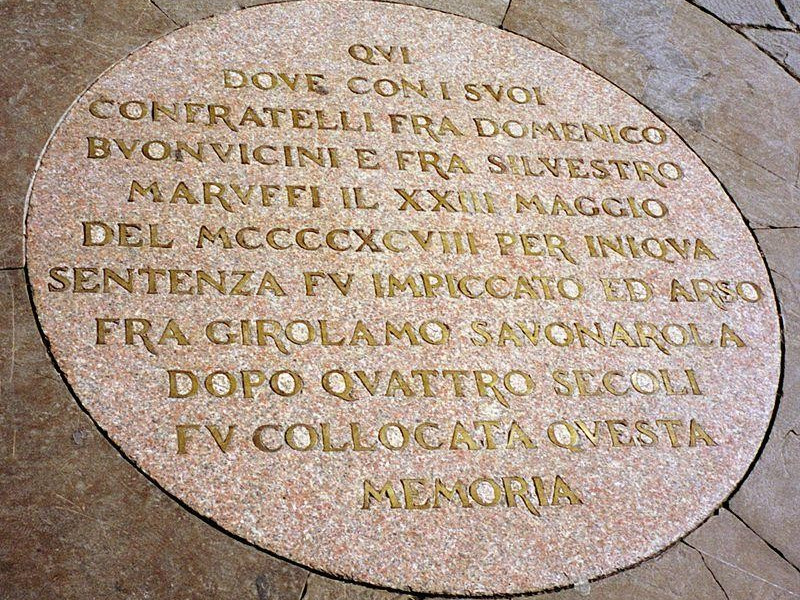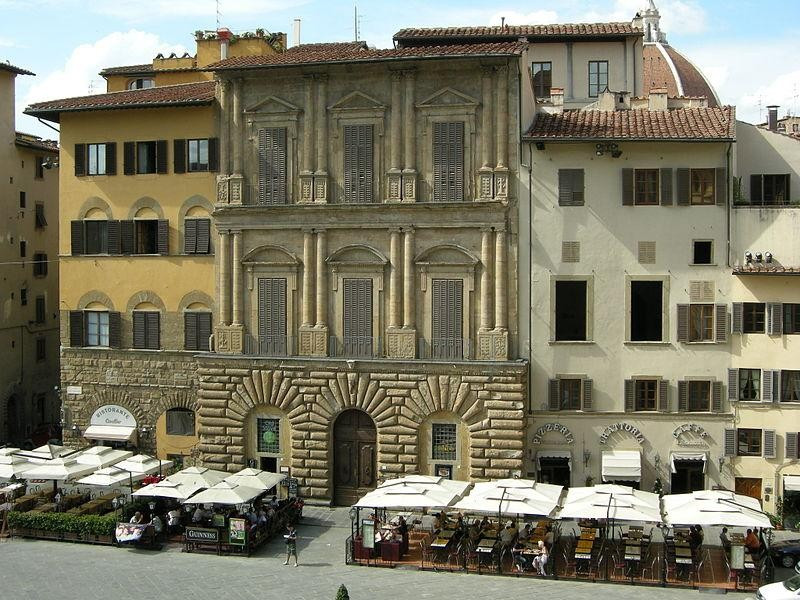Piazza della Signoria
Piazza della Signoria is the central square of Florence, a veritable open-air museum, home to the civil power and heart of the social life of the city. The Square, with characteristic "L" form, has lived important historical events and great triumphs, such as the return to power of the Medici family, in 1530. It began to take its present form around 1268, when the houses of Ghibellines were demolished by Guelfi. In the same period it was built the Palazzo della Signoria (or Palazzo Vecchio), turning the Square in the center of political life, and also the site of public executions, the most famous of which is the one of 1498, when the monk Girolamo Savonarola was hanged and burned for heresy in the same place - marked with a plaque in memory - where, himself, had operated the so-called "Burning of the Vanities", setting fire to books of poems, gaming tables and clothing. The famous statues (today copies of the original, exhibited at the Galleria dell'Accademia), refer to the major political events of Florence. In front of Palazzo Vecchio, are the oldest sculptures: the Marzocco (by Donatello), lion resting a paw on the emblem with orris, and "Judith and Holofernes", by Donatello, symbol of self policy of the Florentine Republic. Michelangelo's David is located in front of the Palazzo Vecchio, the side of the main entrance, to symbolize the power of the Florentine Republic in contrast to the tyranny of the Medici; on the other side, "Hercules and Caco", by Baccio Bandinelli (1534), represent the victory of cunning and force upon the wicked. the Fountain of Neptune, by Ammannati (1575), recalls the maritime ambitions of the Medici; while the statue of Duke Cosimo I realized by Giambologna, is the portrait of the man who could lead the Tuscany under the military might of the Medici. Square, overlooking important historic buildings as well as Palazzo Vecchio, seat of the Town Hall, there is the Loggia dei Lanzi, small open-air gallery, designed by Orcagna in 1376, with arches that recall the Renaissance classicism (inside, you can admire among the many copies of sculptures, the "Rape of the Sabine" by Giambologna and the famous "Perseo" with the head of Medusa, by Benvenuto Cellini); the Mercanza Court; Uguccioni Palace and Assicurazioni Generali Palace.
